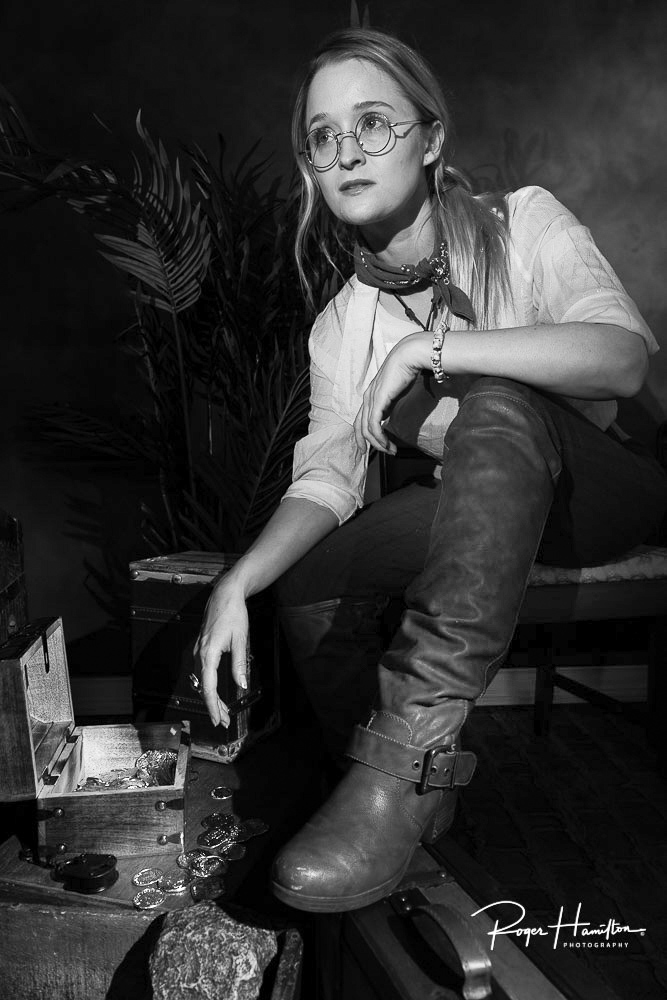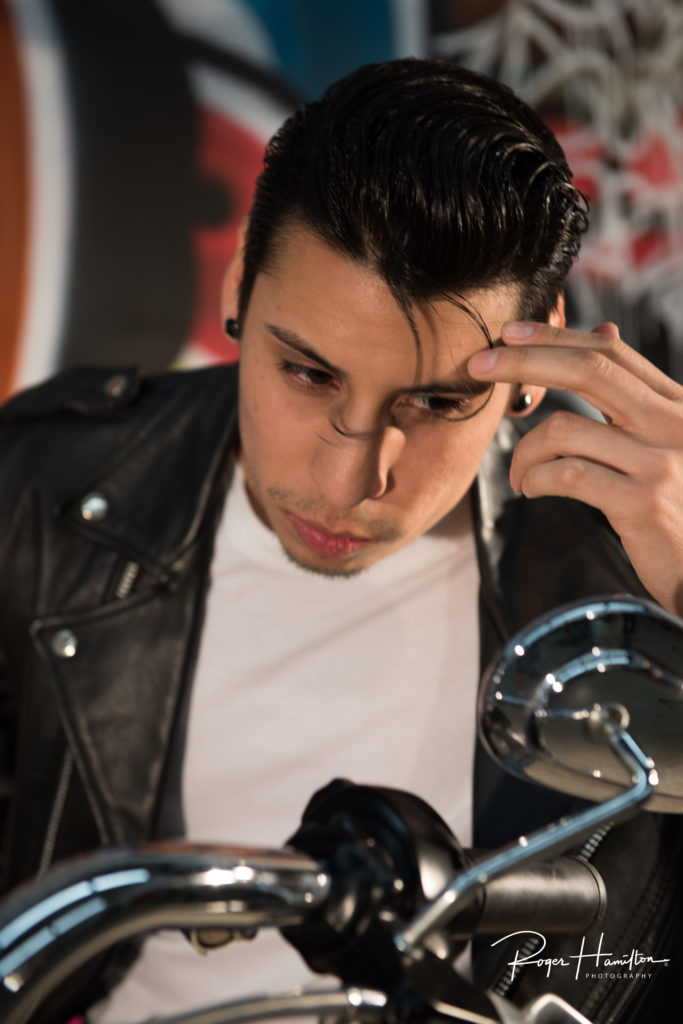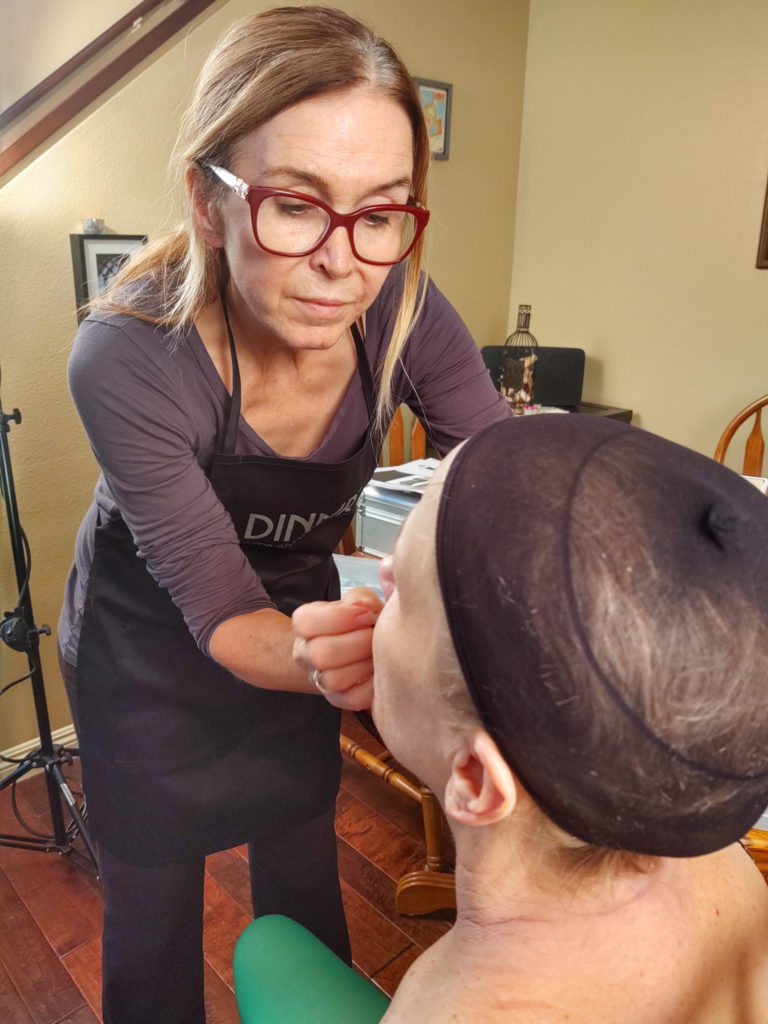So, you’ve chosen your living room as a home studio location?
First, before attempting this, get spousal or roommate approval!
The next thing to consider is what time of day will you be shooting indoors. This can be a problem because stray light from windows can either be a help or hindrance to lighting your subject. If you’re using the windows that’s great, but if you’re not, then you’ll need to control the stray light.
Almost one year ago, I was using my living room as the set for a 1940’s Hollywood lighting project. One of the problems I confronted was managing the stray light entering the set. I controlled the light by using background stands, black backgrounds and a heavy blanket. Controlling light from skylights and tall windows can be much more difficult to manage. I didn’t have this particular problem on my set but if I had, I would’ve used either a scrim or flags. As things were, the set was dark enough so that the lighting I desired was effective and no other modifications were necessary.

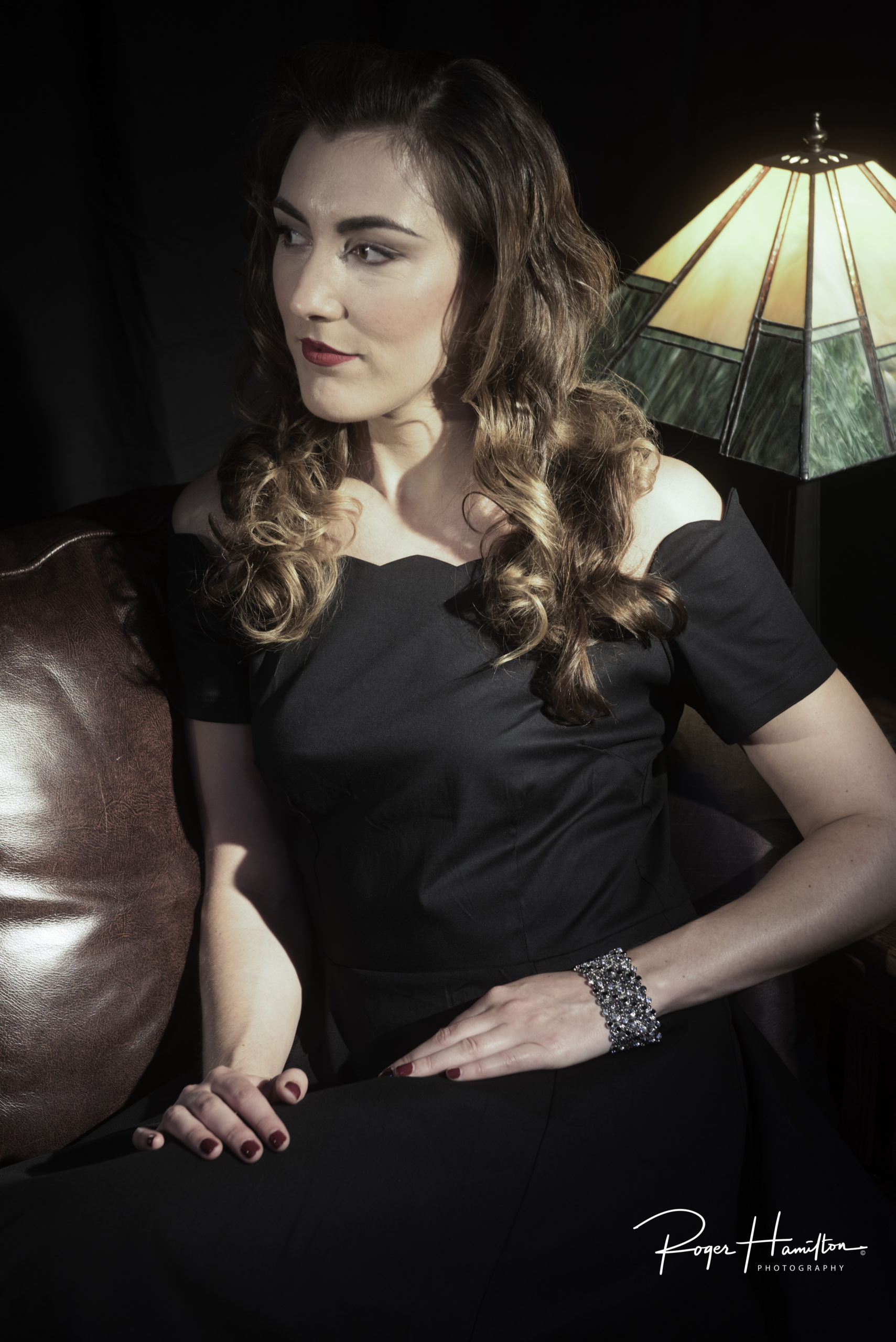
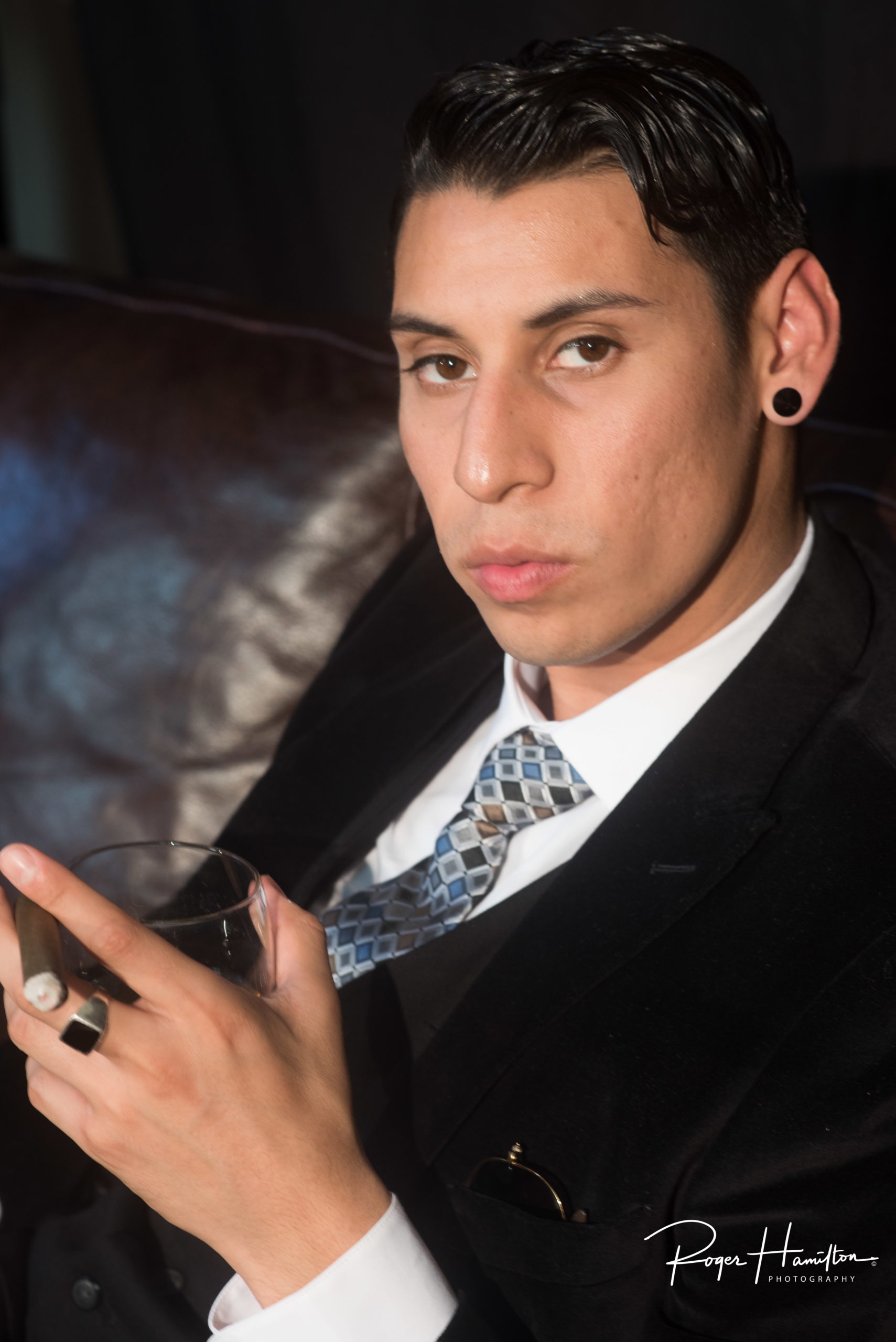
Another consideration while using your living room as a home studio are the electrical sources. With lighting all around, it’s easy to overlook the importance of a safe set. I select my plug-ins carefully so as to not overload a circuit. I also use a number of safety cones to mark tripping hazards and direct traffic away from specific areas on the set where I don’t want people to roam. Hot lights require a little extra management. Be sure that you don’t get anything flammable too close to a hot light for any length of time. If you’re using strobes, then check the wattage rating on the light modifier. Do not exceed the wattage rating on the light modifier as a fire could result! Not only would a small fire be bad for your photoshoot it will be difficult to explain to a roommate or spouse not to mention you won’t be using your living room as a set again.
While shooting, it’s also important to keep in mind the various immovable obstacles present in your home. A sense of awareness of your surroundings is a big plus to avoid a mishap.
After your shoot, be sure to reverse the process of lighting the set by turning off the lights and allowing them to start cooling while removing the power from the power source. Once this is done, the remaining work of dismantling the lighting becomes straightforward. Lastly, the one thing you won’t want to forget is to sweep and/or vacuum the set area. Dusting is also recommended as well.
Happy shooting!

